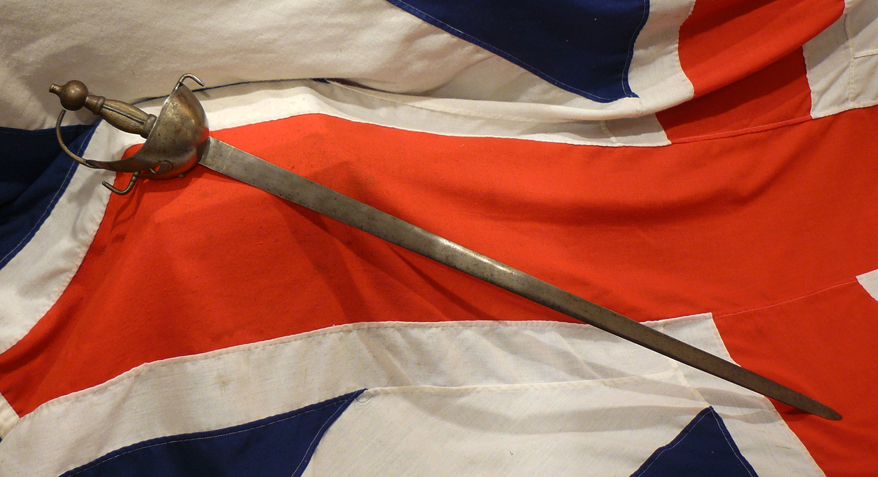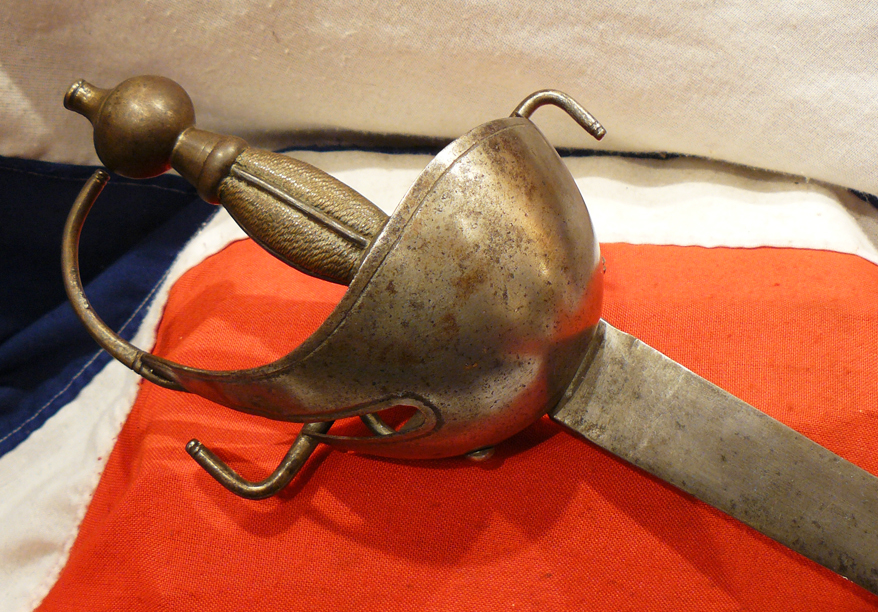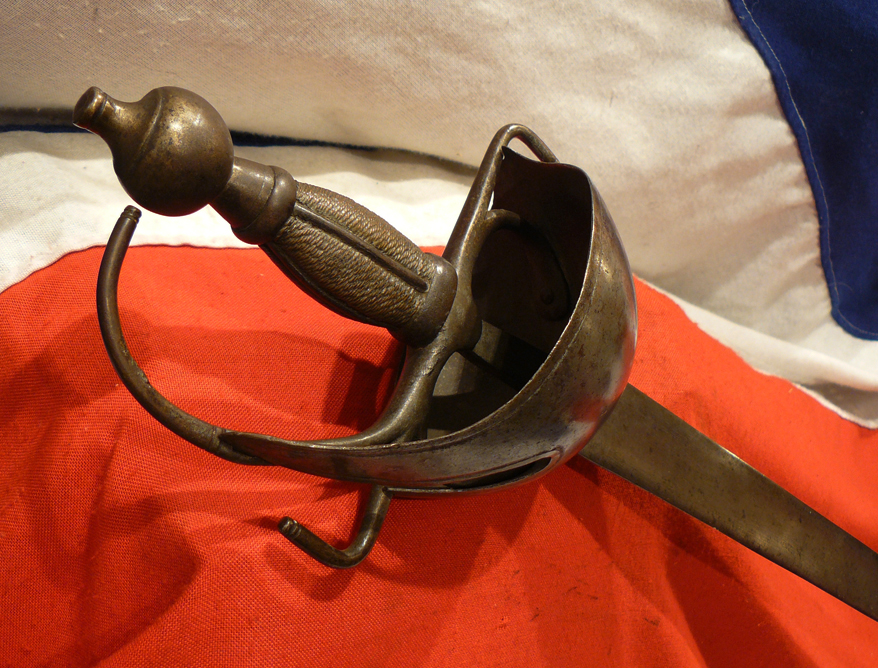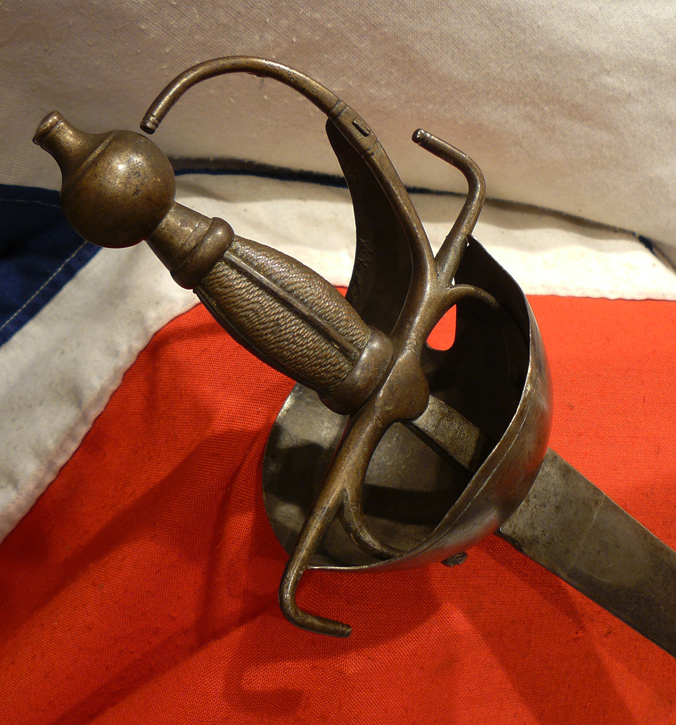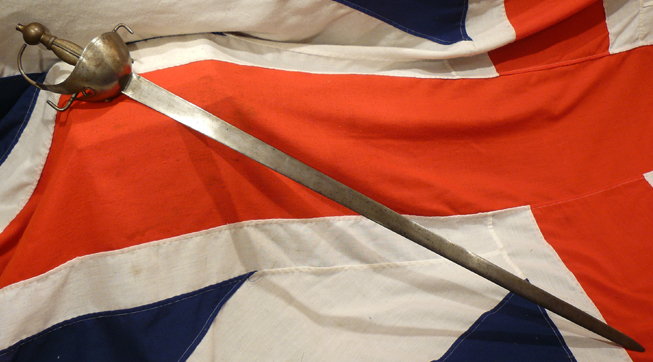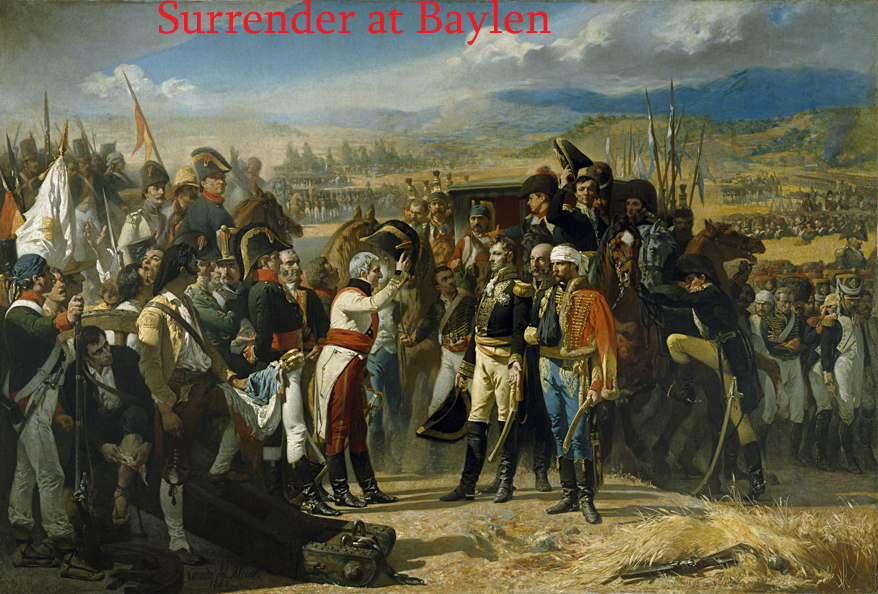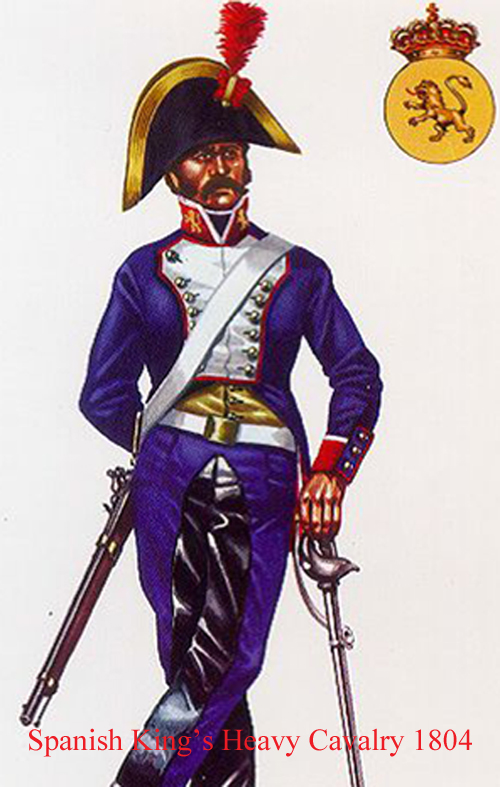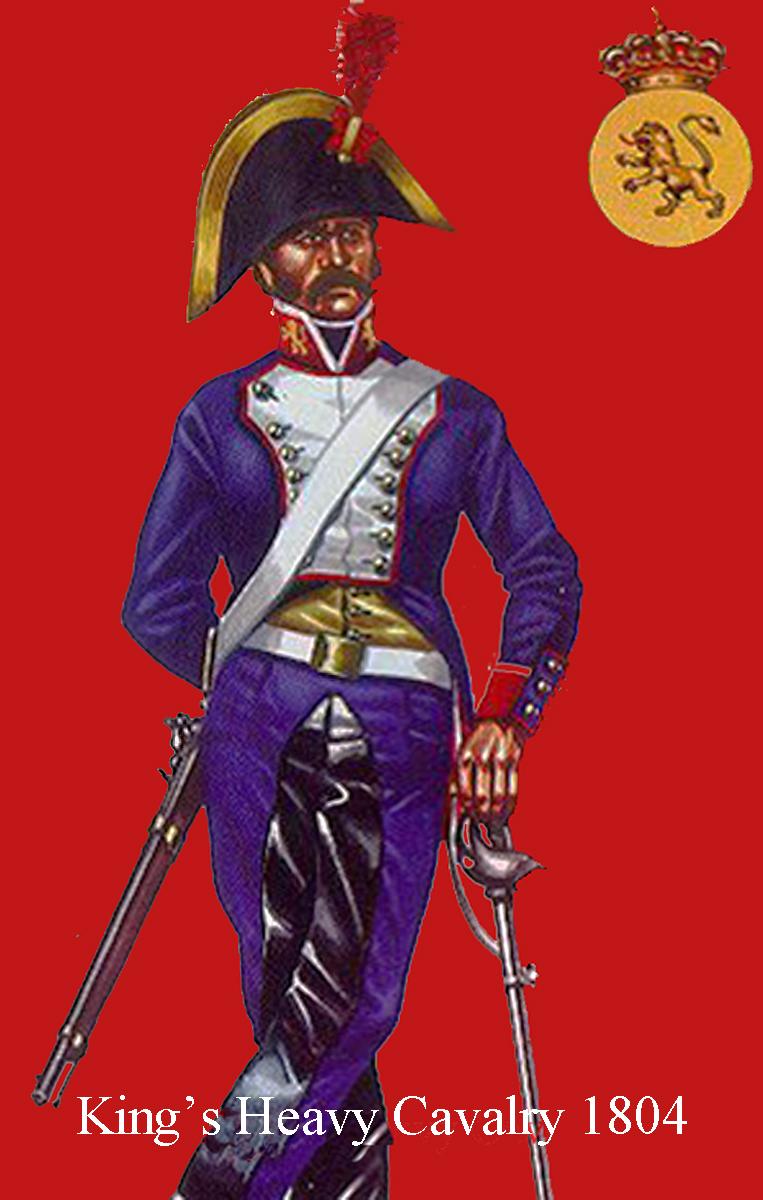A Simply Fabulous Original Antique Napoleonic Wars Sword Of The King of Spain's Elite, Heavy Cavalry Regiment. Used In The Spanish Peninsular Campaign, During Napoleon's Peninsular War in 1808 Until 1814. In Superb Condition.
From the invasion of Spain by Napoleon's forces, in 1808. The Peninsular War involved over 127 battles and engagements against Napoleon and the armies under his command, and this sword may well have been used in dozens of these ferocious conflicts
A fabulous, original, example of these very scarce Napoleonic, Spanish heavy cavalry long blade broadsword. A sword based Spanish late 18th century broadsword.
The hilt is in superb order, with excellent wire bound grip and large shaped bowl, as is the very long broadsword blade.
In 1796 (although there is a controversy around the precise date) a new model sword for Spanish cavalry troopers was adopted. This beautiful example, showing very classic lines and a very similar construction to the previous pattern, presents an almost full cup-hilt in a rapier style, curved quillons and knuckle-bow. The blade was very similar to that of 1728 pattern, having these dimensions: length 940 mm, width 35, thickness 6 mm. Alongside the later 1803 pattern change, these swords were predominantly used by cavalry at the Battle of Bailen {and subsequent battles}. It was the crushing defeat of Napoleon's Grande Armee in the Spanish invasion.
The Battle of Bailen
Fought July 19, 1808, between 15,000 Spaniards under Castaflos, and 20,000 French under Dupont. The French were totally defeated with a loss of over 2,000 men, and Dupont surrendered with his whole army. The Battle of Bailen was contested in 1808 between the Spanish Army of Andalusia, led by Generals Francisco Castanos and Theodor von Reding, and the Imperial French Army's II corps d'observation de la Gironde under General Pierre Dupont de l'Etang. The heaviest fighting took place near Bailen (sometimes anglicised Baylen), a village by the Guadalquivir river in the Jaen province of southern Spain.
In June 1808, following the widespread uprisings against the French occupation of Spain, Napoleon organised French units into flying columns to pacify Spain's major centres of resistance. One of these, under General Dupont, was dispatched across the Sierra Morena and south through Andalusia to the port of Cadiz where an French naval squadron lay at the mercy of the Spanish. The Emperor was confident that with 20,000 men, Dupont would crush any opposition encountered on the way. Events proved otherwise, and after storming and plundering Cordoba in July, Dupont retraced his steps to the north of the province to await reinforcements. Meanwhile, General Castanos, commanding the Spanish field army at San Roque, and General von Reding, Governor of Malaga, travelled to Seville to negotiate with the Seville Junta a patriotic assembly committed to resisting the French incursions?and to turn the province's combined forces against the French.
Dupont's failure to leave Andalusia proved disastrous. Between 16 and 19 July, Spanish forces converged on the French positions stretched out along villages on the Guadalquivir and attacked at several points, forcing the confused French defenders to shift their divisions this way and that. With Castanos pinning Dupont downstream at Andujar, Reding successfully forced the river at Mengibar and seized Bailen, interposing himself between the two wings of the French army. Caught between Castanos and Reding, Dupont attempted vainly to break through the Spanish line at Bailen in three bloody and desperate charges, losing more than 2,500 men.
His counterattacks defeated, Dupont called for an armistice and was compelled to sign the Convention of Andujar which stipulated the surrender of almost 18,000 men, making Bailen the worst disaster and capitulation of the Peninsular War, and the first major defeat of Napoleon's Grande Armee. When news of the catastrophe reached the French high command in Madrid, the result was a general retreat to the Ebro, abandoning much of Spain to the insurgents. France's enemies in Spain and throughout Europe cheered at this first check to the hitherto unbeatable Imperial armies tales of Spanish heroism inspired Austria and showed the force of nation-wide resistance to Napoleon, setting in motion the rise of the Fifth Coalition against France.
The Portuguese and Spanish played an important part in the war. Retrained and reorganised by Marshal William Beresford, Portugal’s soldiers fought bravely alongside those of Britain. The stubborn Spanish defence of cities and towns tied down thousands of French troops. Spanish armies, though frequently defeated, kept reappearing, forcing France to send more armies against them.
French troops were also required to garrison hostile territory and wage a bitter war against Spanish and Portuguese insurgents, the ‘guerrillas’. French communications and supply lines were harassed by their raids and ambushes. By 1812, the French had over 350,000 soldiers in Iberia, but 200,000 were protecting lines of supply rather than serving as front-line troops.
All of these factors meant that although on paper the French heavily outnumbered the British armies in Iberia, they were never able to concentrate enough of their troops to win a decisive victory. The continual drain on French resources led Napoleon to call the conflict the ‘Spanish Ulcer’.
Painting in the gallery by Theodore Gericault. Of a wounded cuirassier, said to be a French cuirassier at the Battle of Bailen. We also show a print of the Spanish Heavy Cavalry of the Line Trooper, 1804, holding his identical sword
Code: 22330
2150.00 GBP

